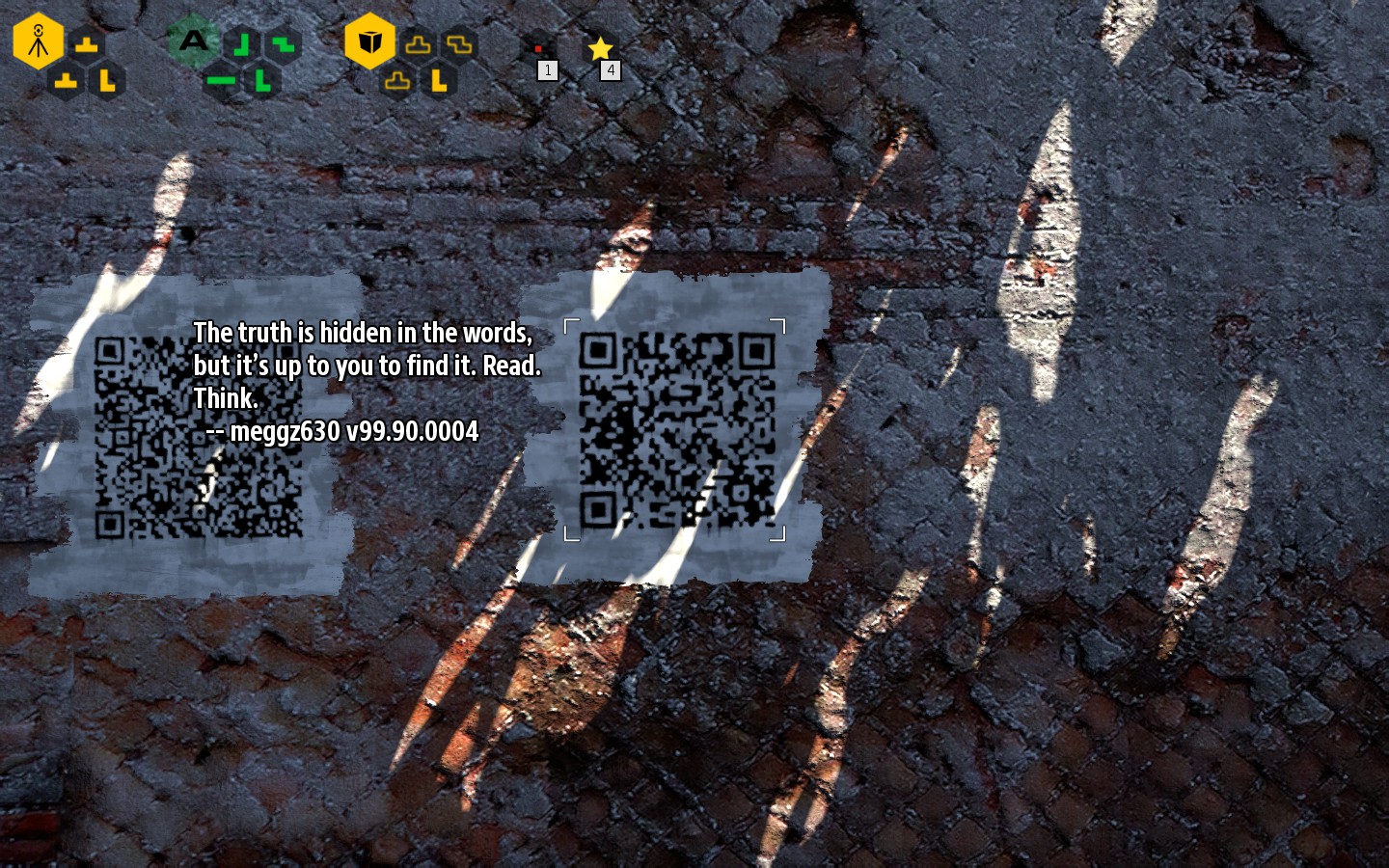In The Talos Principle and its sequel, the integration of QR Codes and graffiti serves as a complex narrative device that enhances the storytelling and atmospheric depth of the games. These hidden messages not only enrich the lore but also foster a sense of exploration and engagement that is pivotal to the player’s experience.
QR Codes: Insights and Easter Eggs
The QR Codes scattered throughout the game world are more than just digital puzzles; they are gateways to the philosophical underpinnings of the narrative. When scanned with external readers, these codes reveal encoded messages that resonate with the game’s exploration of identity, existence, and the nature of consciousness. For instance, messages like “Never surrender the idea that you could become more than you are right now. There’s always another …” prompt players to reflect on their own growth within the context of the game and beyond. Other codes express sentiments of loss or a yearning for something that feels fundamentally absent, encapsulating the game’s themes of isolation and longing. An example such as “Everything is wrong here. Something is missing,” invites players to contemplate the fragmented reality within which they navigate.
In addition to philosophical musings, some QR Codes double as clever Easter eggs that reference other games or elements of pop culture. The message “You are not here,” serves as a nod to Antichamber, drawing connections between different gaming experiences and encouraging players to appreciate the intertextuality within their media consumption. Moreover, the varied languages and abstract messages found among these codes further enrich the narrative universe by enhancing its mystique and encouraging thorough exploration.
Graffiti: Atmosphere and Lore
Graffiti found in less accessible areas of the game complements the themes presented by the QR Codes, adding another layer of engagement. The presence of graffiti, particularly in locations such as rooftops near broken QR Codes, creates a tangible sense of history and emotional resonance within the game world. These painted messages often contain odd or thought-provoking phrases that resonate with the broader existential inquiries posed by the narrative. They act as cultural artifacts within the game, inviting players to consider the implications of creative expression in a designed reality.
Immersive World-Building and Meta-Puzzles
The strategic placement of QR Codes and graffiti not only serves to deepen the narrative but also functions as a tool for immersive world-building. These elements are deliberately designed to enhance player interaction with the environment, often leading them to secret areas or rewarding discoveries that are integral to understanding the broader story. This approach aligns with the series’ overall theme of exploration—both of the game world and of philosophical questions surrounding existence and AI.
Conclusion
The use of QR Codes and graffiti in The Talos Principle series is a sophisticated storytelling mechanism that goes beyond traditional narrative structures. By embedding philosophical inquiries, references to other works, and engaging puzzles within the physical environment, the games invite players to actively engage with their themes of consciousness, reality, and creation. This layered approach transforms the in-game experience into a profound exploration of identity and existence, reflecting the complexity of the human experience in a digital context. Players are thus encouraged not just to reach the end of their journey but to reflect on the myriad ideas presented along the way, thereby enhancing their immersion in the game world.







Leave a Reply